-
 Bitcoin
Bitcoin $112500
1.36% -
 Ethereum
Ethereum $4340
1.48% -
 XRP
XRP $2.980
3.51% -
 Tether USDt
Tether USDt $0.9999
-0.02% -
 BNB
BNB $881.5
0.91% -
 Solana
Solana $216.5
7.13% -
 USDC
USDC $0.9998
-0.01% -
 Dogecoin
Dogecoin $0.2393
7.61% -
 TRON
TRON $0.3339
1.52% -
 Cardano
Cardano $0.8663
4.54% -
 Hyperliquid
Hyperliquid $50.80
8.05% -
 Chainlink
Chainlink $23.12
4.01% -
 Ethena USDe
Ethena USDe $1.001
-0.02% -
 Sui
Sui $3.480
2.99% -
 Stellar
Stellar $0.3778
4.99% -
 Bitcoin Cash
Bitcoin Cash $587.1
-2.75% -
 Avalanche
Avalanche $25.71
5.62% -
 Hedera
Hedera $0.2273
3.96% -
 UNUS SED LEO
UNUS SED LEO $9.535
-0.08% -
 Litecoin
Litecoin $113.2
-1.13% -
 Cronos
Cronos $0.2520
-2.28% -
 Toncoin
Toncoin $3.099
0.39% -
 Shiba Inu
Shiba Inu $0.00001292
4.41% -
 Polkadot
Polkadot $4.065
2.29% -
 Uniswap
Uniswap $9.675
4.07% -
 Ethena
Ethena $0.7843
7.01% -
 Dai
Dai $0.9997
-0.02% -
 World Liberty Financial
World Liberty Financial $0.2117
-6.77% -
 Monero
Monero $271.3
-0.38% -
 Aave
Aave $306.3
2.38%
How to find your portfolio value in Coinbase Wallet?
Your Coinbase Wallet portfolio value updates in real time, reflecting all crypto assets, tokens, and NFTs across connected blockchains.
Sep 08, 2025 at 04:18 am
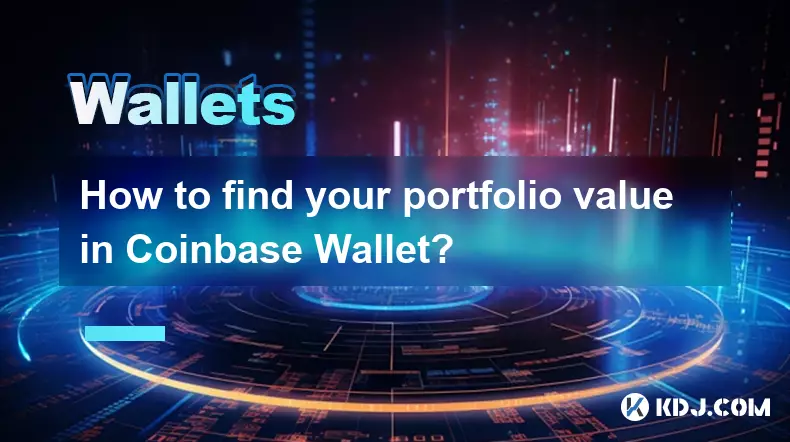
Accessing Your Portfolio Overview
1. Open the Coinbase Wallet application on your mobile device. Ensure you have the latest version installed to access all features and security updates. Log in using your credentials or biometric authentication if enabled.
2. Once inside the app, the home screen displays a summary of your assets. This includes your total portfolio value denominated in your selected fiat currency, typically USD by default. The value updates in real time based on current market prices.
3. The portfolio value is calculated by aggregating the worth of all your cryptocurrencies, tokens, and NFTs held within the wallet. This total reflects both your stored balances and any assets involved in active decentralized finance (DeFi) protocols, provided they are visible on the connected blockchain.
4. Tap on the total value display to expand the view and see a detailed breakdown of each asset. This includes the amount you hold, its current market price, and percentage change over 24 hours. This feature helps users track performance without leaving the main screen.
Navigating Asset Balances
1. Scroll down on the home screen to view a list of all your individual assets. Each entry shows the token symbol, balance, and approximate fiat value. Stablecoins like USDC are typically listed near the top due to their consistent valuation.
2. For tokens not automatically detected, you can manually add them using the “Add Token” feature. This is useful for newly acquired tokens from decentralized exchanges or airdrops. Once added, they are included in your total portfolio calculation.
3. The wallet supports multiple blockchains, including Ethereum, Polygon, BNB Chain, and others. Your portfolio value consolidates holdings across these networks, giving a unified financial picture regardless of the underlying chain.
4. If you have connected external DeFi accounts or staked assets, their value may appear under “Earn” or “Staking” sections. These balances are often reflected in your main portfolio total, depending on the integration level with the protocol.
Understanding Valuation Mechanics
1. The portfolio value relies on real-time price feeds from decentralized oracles and centralized market data aggregators. Slight delays or discrepancies can occur during periods of high volatility or low liquidity for certain tokens.
2. Prices are updated dynamically as market conditions change, ensuring users have current valuations for trading or withdrawal decisions. However, the displayed value is an estimate and may differ slightly from execution prices on exchanges.
3. Fiat conversions are based on the exchange rate at the time of display. Users can change the base currency in settings, which recalculates the entire portfolio value accordingly. This is helpful for international users managing assets in local currencies.
4. NFTs are valued based on recent sale prices or floor prices from marketplaces like OpenSea or LooksRare. Since NFTs lack standardized pricing, the estimated value is indicative and may not reflect actual resale potential.
Managing Connected Accounts and Accuracy
1. If you use the same seed phrase across multiple devices or interfaces, ensure all transactions are synced. Discrepancies in balance can affect portfolio accuracy, especially after recent transfers or swaps.
2. The Coinbase Wallet browser extension mirrors the mobile app’s data when logged in with the same credentials. Portfolio value remains consistent across platforms, allowing seamless monitoring whether on desktop or mobile.
3. Regularly review your asset list for outdated or irrelevant tokens that may clutter your view and distract from core holdings. Removing unused tokens does not affect your balance but improves clarity.
4. Third-party dApps you interact with may temporarily display different balances due to caching or delayed updates. Always refer to the official Coinbase Wallet interface for the most accurate portfolio valuation.
Frequently Asked Questions
Why does my portfolio value fluctuate even when I haven’t made any transactions?Market prices of cryptocurrencies change constantly due to supply and demand dynamics. Even without activity on your part, the valuation of your holdings shifts with global trading patterns.
Can I export my portfolio data for tax reporting?Yes, Coinbase Wallet allows you to view transaction history, which can be manually recorded or integrated with tax software. For detailed reporting, consider using blockchain analytics tools that sync with your wallet address.
Does the portfolio value include assets in decentralized exchanges?If you have provided liquidity on a DEX and the tokens are held in a smart contract linked to your wallet address, they may appear as token balances. However, some LP positions require specialized trackers for accurate valuation.
What should I do if my portfolio shows zero value?Check your network settings and ensure the correct blockchain is selected. Also verify that your assets haven’t been transferred or lost due to unauthorized access. Restoring the wallet from backup can help confirm balance accuracy.
Disclaimer:info@kdj.com
The information provided is not trading advice. kdj.com does not assume any responsibility for any investments made based on the information provided in this article. Cryptocurrencies are highly volatile and it is highly recommended that you invest with caution after thorough research!
If you believe that the content used on this website infringes your copyright, please contact us immediately (info@kdj.com) and we will delete it promptly.
- Meme Coins, Market Cap, and DeFi: A New Yorker's Take on the Crypto Circus
- 2025-09-09 00:25:15
- Bitcoin Locked Away: Is the Next Move a Breakout?
- 2025-09-09 00:25:15
- Lyno AI: The AI Token Revolutionizing Crypto Buying
- 2025-09-09 01:05:16
- Bitcoin, Corporate Treasury, and Strategy: A New Era of Financial Management
- 2025-09-09 01:05:16
- Fintech, Crypto, and Worldcoin: A New Yorker's Take on the Future
- 2025-09-09 00:30:12
- Bitcoin Investment Strategy: Navigating the Crypto Landscape in 2025
- 2025-09-09 00:45:15
Related knowledge
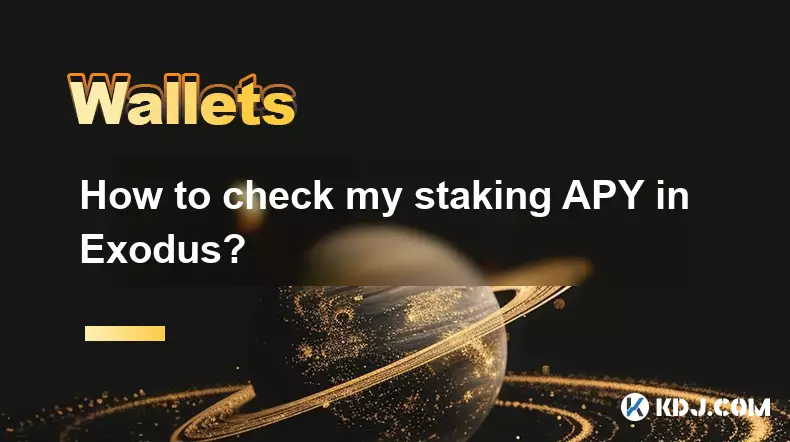
How to check my staking APY in Exodus?
Sep 08,2025 at 08:19pm
Understanding Staking APY in Exodus Wallet1. Staking APY, or Annual Percentage Yield, reflects the total return earned on a staked cryptocurrency over...

How to find my Ethereum address in Exodus?
Sep 06,2025 at 06:18pm
Accessing Your Ethereum Address in Exodus Wallet1. Launch the Exodus wallet application on your desktop or mobile device. Ensure that you have success...
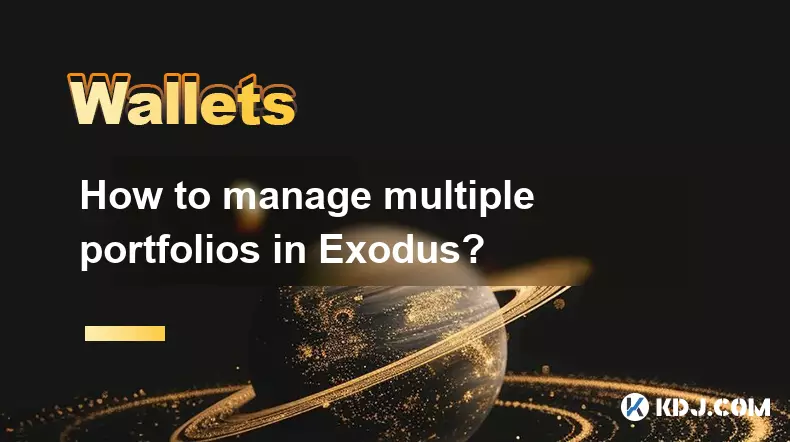
How to manage multiple portfolios in Exodus?
Sep 07,2025 at 04:00pm
Understanding Portfolio Management in ExodusExodus is a digital wallet that supports a wide range of cryptocurrencies, allowing users to store, exchan...
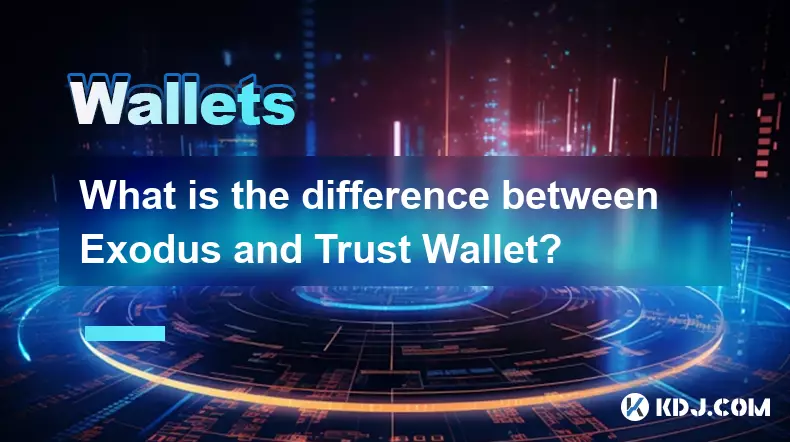
What is the difference between Exodus and Trust Wallet?
Sep 05,2025 at 05:36pm
Differences in Wallet Architecture and Design Philosophy1. Exodus operates as a multi-asset desktop and mobile wallet with an emphasis on user experie...
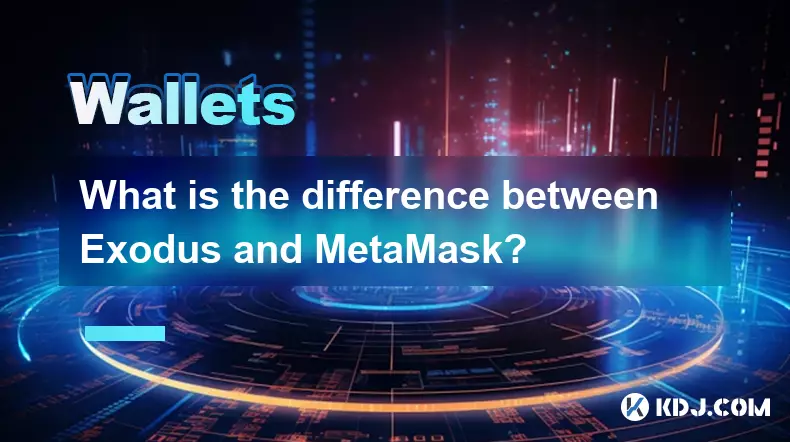
What is the difference between Exodus and MetaMask?
Sep 08,2025 at 03:01pm
Understanding the Role of Decentralized Exchanges in Modern Crypto Trading1. Decentralized exchanges (DEXs) have become a cornerstone of the cryptocur...
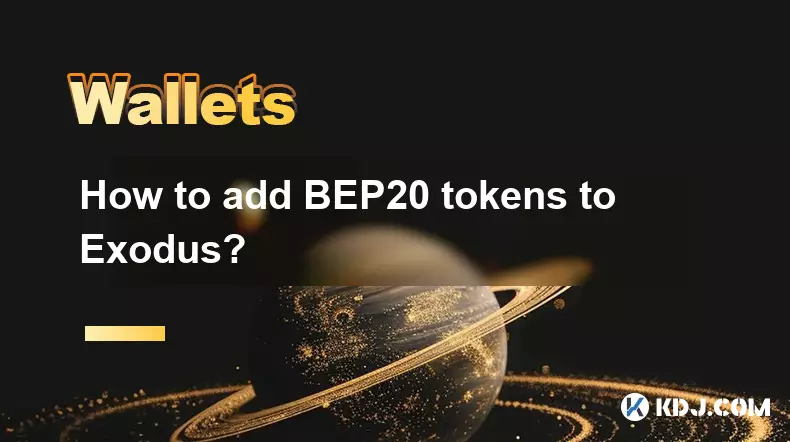
How to add BEP20 tokens to Exodus?
Sep 06,2025 at 09:36am
Understanding BEP20 Tokens and Exodus Wallet Compatibility1. BEP20 is a token standard used on the Binance Smart Chain, designed to support smart cont...

How to check my staking APY in Exodus?
Sep 08,2025 at 08:19pm
Understanding Staking APY in Exodus Wallet1. Staking APY, or Annual Percentage Yield, reflects the total return earned on a staked cryptocurrency over...

How to find my Ethereum address in Exodus?
Sep 06,2025 at 06:18pm
Accessing Your Ethereum Address in Exodus Wallet1. Launch the Exodus wallet application on your desktop or mobile device. Ensure that you have success...

How to manage multiple portfolios in Exodus?
Sep 07,2025 at 04:00pm
Understanding Portfolio Management in ExodusExodus is a digital wallet that supports a wide range of cryptocurrencies, allowing users to store, exchan...

What is the difference between Exodus and Trust Wallet?
Sep 05,2025 at 05:36pm
Differences in Wallet Architecture and Design Philosophy1. Exodus operates as a multi-asset desktop and mobile wallet with an emphasis on user experie...

What is the difference between Exodus and MetaMask?
Sep 08,2025 at 03:01pm
Understanding the Role of Decentralized Exchanges in Modern Crypto Trading1. Decentralized exchanges (DEXs) have become a cornerstone of the cryptocur...

How to add BEP20 tokens to Exodus?
Sep 06,2025 at 09:36am
Understanding BEP20 Tokens and Exodus Wallet Compatibility1. BEP20 is a token standard used on the Binance Smart Chain, designed to support smart cont...
See all articles

























![[Pycoin] PI Coin -US President (Trump) Declaration ?? !! 'US' runs first. / Paikoin mining speed acceleration [Pycoin] PI Coin -US President (Trump) Declaration ?? !! 'US' runs first. / Paikoin mining speed acceleration](/uploads/2025/09/08/cryptocurrencies-news/videos/pycoin-pi-coin-president-trump-declaration-runs-paikoin-mining-speed-acceleration/68bed38c01e7a_image_500_375.webp)






























































